Your message has been sent.
We’ll process your request and contact you back as soon as possible.
The form has been successfully submitted.
Please find further information in your mailbox.
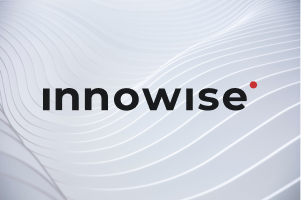
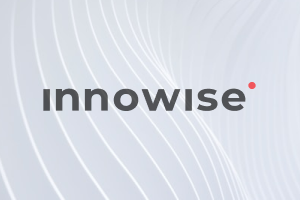

AI is often hailed as a “game-changer”, but the real magic happens when we move beyond the surface-level hype.
It’s not just about coding smarter algorithms or automating mundane tasks. AI challenges us to rethink the very framework of decision-making, from how we interpret data to how we build relationships with customers.
This article isn’t about glorifying AI — it’s about understanding how, in the right hands, it can unravel new layers of opportunity, spark creativity, and redefine what’s possible in your business.
“At Innowise, we know AI isn’t just another tech upgrade, it’s a mindset shift. Businesses that get it don’t just automate, they innovate. They look at challenges differently, using data to nurture new ideas and make smarter moves. We’re here to help companies not just catch up but lead with AI-driven strategies.”
Let’s look at the cases of AI in different industries that are making the most noise right now.
If there’s one industry where AI has made an undeniable impact, it’s healthcare. Among the most powerful artificial intelligence use cases, healthcare goes beyond automating routine tasks or crunching medical data. It transforms patient care through prediction and personalization.
Imagine being able to forecast a patient’s risk of complications before prescribing a treatment. Predictive analytics in healthcare is doing just that. By analyzing patient data — like electronic health records (EHRs), genetic information, and real-time health metrics — AI can identify patterns that signal potential issues. This means that healthcare professionals can intervene earlier, which reduces hospitalization rates and improves long-term outcomes.
Another great example is remote patient monitoring. With AI-driven predictive models, healthcare providers can track vital signs and detect anomalies that might indicate a problem. Think of it as keeping a finger on the pulse — literally.
Personalization in healthcare isn’t just a nice touch — it’s becoming a medical necessity. Among the many applications of AI, one of the most impactful is its ability to analyze a patient’s medical history, genetics, lifestyle factors, and even social determinants of health to recommend the most effective treatment options. This is especially crucial for chronic diseases like diabetes, where one-size-fits-all solutions simply don’t work.
Let’s talk about one of the most promising applications of artificial intelligence: diagnostic imaging. Traditional diagnostic methods often rely on the subjective interpretation of images by radiologists. And people can sometimes miss patterns. But AI doesn’t make those mistakes — it’s trained to spot even the most subtle indicators. In oncology, for instance, AI-powered image analysis can detect early-stage tumors that a human eye might overlook.
But it doesn’t stop at just finding something unusual. The real power lies in AI’s ability to cross-reference data from thousands of similar cases. It’s not just about detecting anomalies — it’s about understanding what they mean in the broader context of patient health.
AI-powered skin scanner. AI-driven skin scanners are already diagnosing skin conditions with incredible accuracy. By analyzing images, the AI can identify potential issues like melanoma or other skin cancers early on.

AI for depression detection. An AI platform developed for identifying early signs of depression uses natural language processing and behavioral data to provide clinicians with valuable insights, making it easier to detect mental health issues before they escalate.
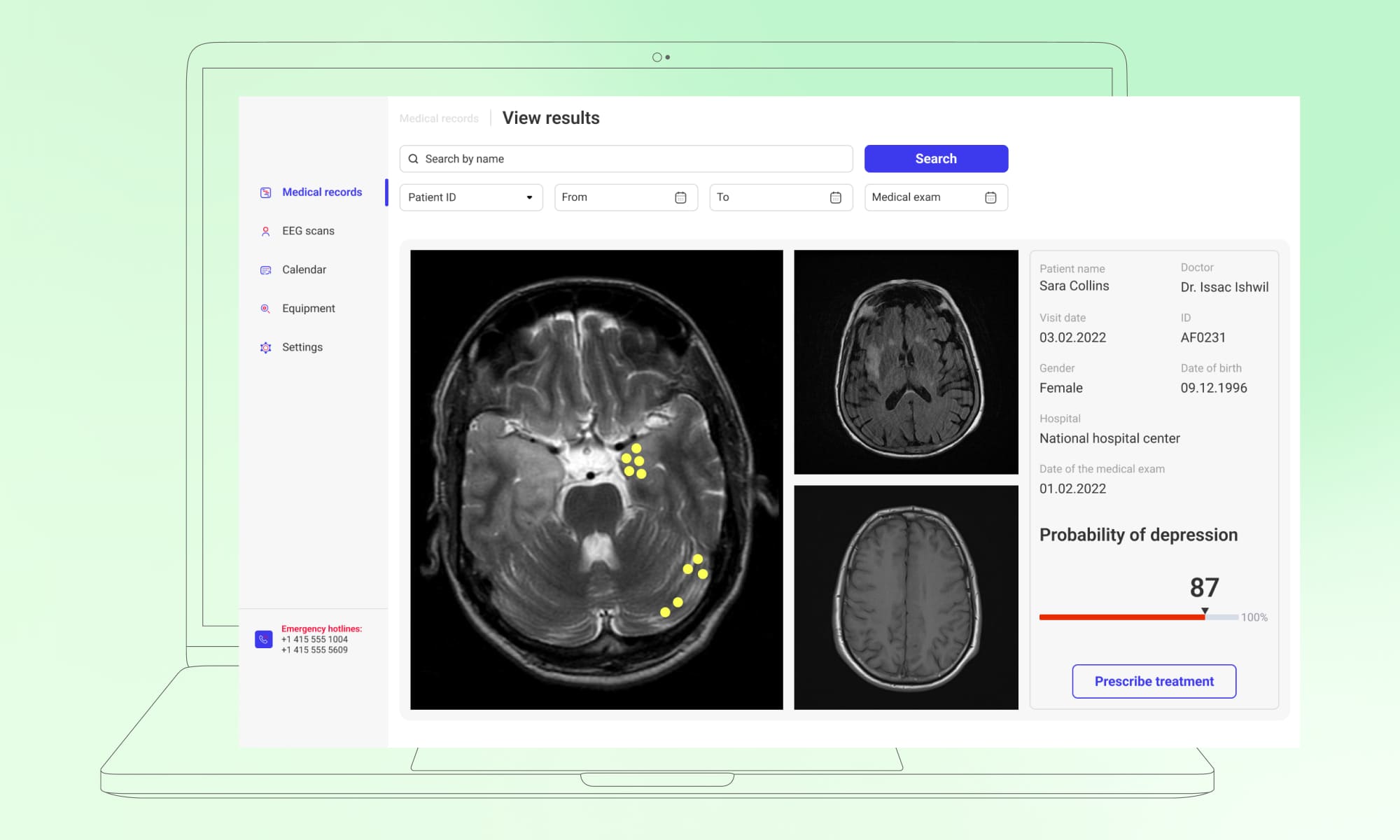
Personalized medicine software. AI systems are helping healthcare providers create treatment plans tailored to the individual, based on data-driven insights.

Banks are no longer just places to store money. They’re part of the wave of industries using AI, evolving into tech-driven service providers that leverage it to offer smarter, more secure, and more personalized experiences.
Fraud detection can’t be an afterthought — it’s absolutely essential in finance. The cool part? As with AI in other industries, AI makes it way more manageable. Instead of sifting through endless data manually, machine learning algorithms do the heavy lifting. They pick up on weird transaction patterns or sudden changes in account activity right when they happen. It’s like having a digital watchdog that never sleeps, keeping everything secure without missing a beat. This way, AI increases trust and reduces fraud-related costs.
Managing risk is at the heart of finance. Traditional models often fall short when it comes to dynamic data, but AI-driven predictive analytics can process vast datasets, identifying trends and forecasting risks before they escalate. Banks use this approach to assess creditworthiness, analyze market volatility, and develop investment strategies. It’s not just about reducing risks either — AI’s opening the door to broader financial inclusion by helping lenders assess people who might’ve been overlooked before, using alternative data.
Well, customer expectations are evolving. AI helps banks meet those expectations by analyzing individual financial behaviors and preferences. From offering tailored investment advice to customizing product recommendations, AI makes banking feel more like a conversation than a transaction. Generative AI is even helping banks send out messages that actually sound human. And when you do that right? You don’t just make customers happier — you boost retention, open more cross-sell opportunities, and basically give people more reasons to stick around.
AI-based banking software. It’s a banking platform that doesn’t just wait for customers to leave — it actively predicts when they might. Innowise helped a bank going through digital transformation by creating an AI solution that analyzes user behavior to spot patterns of potential churn. By using machine learning to detect these early signs, the system allowed the bank to launch personalized retention campaigns.

Machine learning solution for a bank. This banking system not only reacts to fraud but also predicts it. Innowise built a machine learning solution that analyzes vast amounts of transaction data — from credit histories to real-time activity. By using deep learning algorithms, the system identifies suspicious behavior in real time. This helps the bank spot potential fraud, reduce false positives, and protect account holders proactively.

When you think about AI, agriculture probably isn’t the first industry that pops into your head. But here’s the thing — it’s one of the fastest-changing fields (no pun intended) out there, thanks to tech. Farmers aren’t just relying on gut feelings anymore. They’re using data-driven insights to make smarter, more sustainable choices. From predicting crop yields to automating tough, repetitive tasks, AI is helping tackle challenges that have been around for ages.
Forget the old way of farming where every part of the field got the same treatment. Precision farming changes the game. AI systems pull data from soil sensors, satellite images, and weather forecasts to make smart decisions about planting, watering, and fertilizing. The goal here is to give crops just what they need — nothing more, nothing less. This targeted approach means higher yields and way fewer wasted resources.
Imagine being able to detect plant diseases before they spread. AI-powered imaging systems analyze leaves and stems to identify signs of infection, pests, or nutrient deficiencies. Instead of waiting for visible symptoms, farmers can intervene early, protect their crops, and save money on treatments.
Labor shortages are a persistent problem in agriculture. AI-driven robotics is stepping up to fill the gap. These automated harvesters use computer vision to identify ripe produce, carefully picking crops without damaging them. This not only ensures efficiency but also helps maintain product quality.
ML solution for weed elimination. Imagine autonomous agricultural robots equipped with computer vision and machine learning capabilities that can identify and eliminate weeds using lasers while selectively fertilizing crops based on their specific needs. Innowise’s machine learning solution achieves this by integrating real-time image processing and AI-driven decision-making. Less guesswork, fewer chemicals — just smarter, greener farming.

If there’s one sector where AI is making waves right now, it’s retail and e-commerce. The rapid growth of online shopping, coupled with shifting consumer expectations, has pushed businesses to rethink their strategies and explore AI use cases. From personalized shopping experiences to efficient inventory management, AI is helping retailers stay competitive by making smarter, faster decisions.
Customers today expect tailored recommendations and seamless online experiences. AI-driven recommendation engines analyze browsing history, purchase patterns, and user behavior to offer personalized product suggestions. It’s more than just showing similar items — it’s predicting what customers will want next. When you get it right, you’re not just improving the experience — you’re also increasing average order value, keeping customers coming back, and getting way better conversion rates.
Managing inventory efficiently is crucial, especially for e-commerce businesses that deal with fluctuating demand. AI-driven systems predict which products are likely to sell out and when. This allows retailers to restock proactively and helps avoid both overstocking and stockouts, maintaining a smooth supply chain. Which leads to lower operational costs, improved product availability, and faster fulfillment.
Ever wished you could just snap a photo of a product and instantly find it online? That’s where AI-powered visual search comes in. By analyzing image data, these systems can match items from a photo with products available in the store. It’s a real breakthrough for fashion retail and lifestyle brands looking to simplify product discovery. It means faster product discovery, higher conversion rates because you’re cutting out steps to buy, a smoother mobile experience that fits how people actually shop today, and better customer satisfaction because users stay in control.
Face recognition app. It’s integrated into a smart security system for retail spaces. By tapping into existing CCTV setups, it helps staff identify employees and flag potential security issues right away — even if the video’s a bit grainy or there’s poor lighting. It’s like giving your security system a quick reaction time, so you’re always one step ahead.
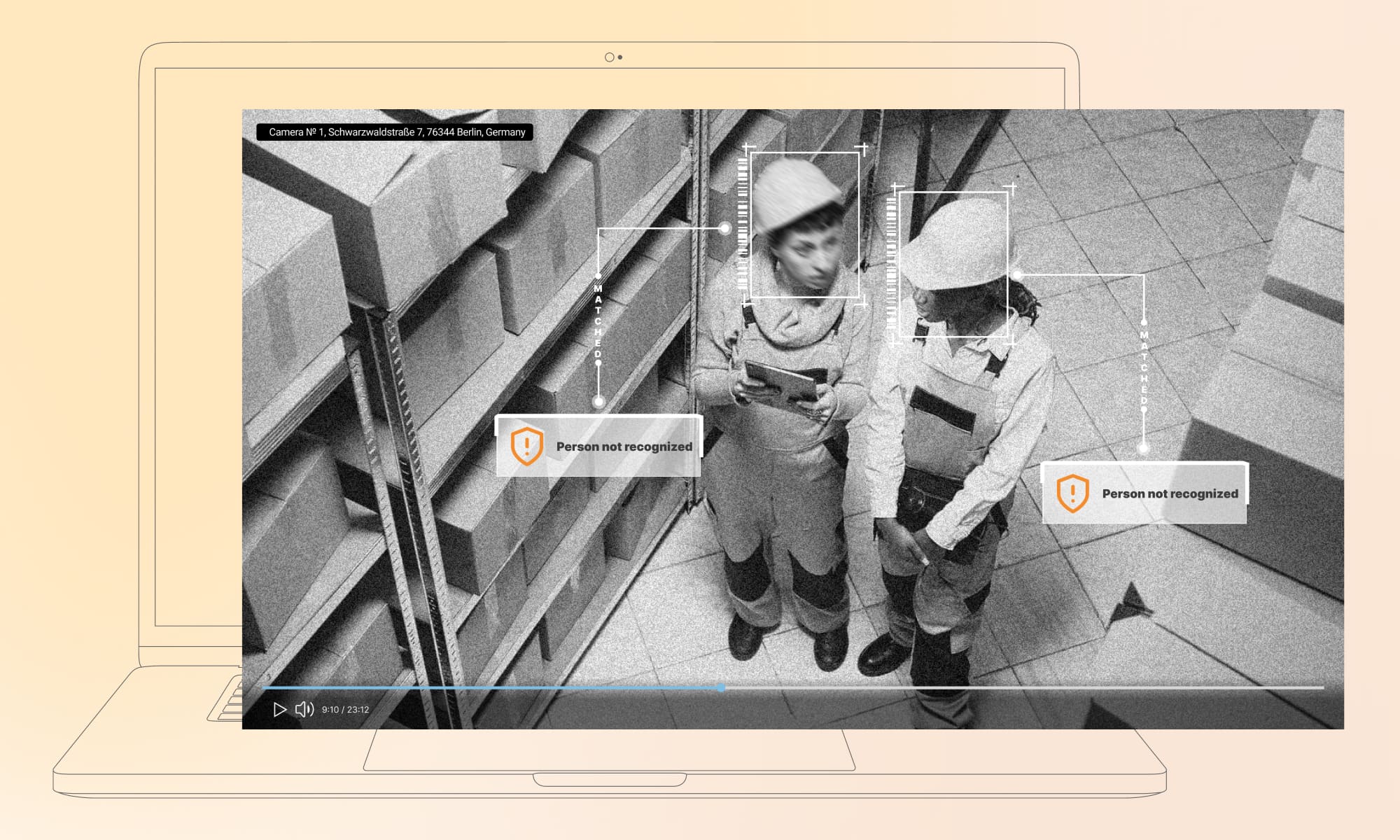
Manufacturing is one of the industries that use AI quite actively. From predictive maintenance to supply chain optimization, AI is redefining how factories operate. Think of it as moving from reactive management to proactive strategy.
Downtime kills productivity. With AI, maintenance teams don’t have to wait for something to break. They can see the early signs of trouble and act before machines fail. It’s like getting a heads-up warning every time a part needs attention. This proactive approach saves time, money, and resources.
Keeping quality high is tough when it depends on human judgment alone. AI helps spot tiny defects that even a trained eye might miss. These systems check every product coming off the line and catch mistakes early. That way, companies protect their reputation and cut down on waste at the same time.
Managing supply chains isn’t just about moving goods. It’s about planning for what’s coming next. AI looks at data from production, distribution, and even customer demand. It predicts what will be needed and when. The result? Better stock management, fewer delays, and a lot less waste. In today’s world, where disruptions happen all the time, being proactive is everything.
Web extension to predict supply disruptions. Imagine running a manufacturing plant where you’re never caught off guard by low stock levels. Innowise developed a web extension that uses AI to forecast supply needs based on current production rates, historical demand, and market trends. The system automatically triggers alerts when it’s time to reorder materials to keep production lines running smoothly without delays. It’s like having a virtual supply chain manager that never sleeps.

The media and entertainment industry has always thrived on creativity, and in recent years, AI has become a crucial part of content creation, distribution, and audience engagement. From generating personalized recommendations to creating immersive experiences, AI is helping media companies deliver more captivating and relevant content. It’s not just about producing more — it’s about producing smarter.
Think about your favorite streaming service. Ever wondered how it always seems to know what you want to watch next? That’s AI at work. By analyzing your viewing history, preferences, and even the time of day you usually watch, AI algorithms generate personalized recommendations that increase user engagement and session length. And reduces churn by keeping content fresh and relevant, and drives consumption across more content categories.
It’s about delivering the right content at the right time to keep audiences coming back.
From writing news articles to generating music and visual art, AI-driven creative tools are becoming surprisingly adept at mimicking human creativity. Some studios are even using AI-generated scripts as a starting point for new projects, blending human creativity with machine efficiency. And it’s not just about being clever — AI speeds up production timelines, cuts localization costs by auto-generating subtitles and dubbing, and makes content more accessible to global audiences. It’s faster, smarter, and way more scalable than the old ways.
The line between real and virtual worlds is blurring, thanks to AI-powered augmented reality (AR) and virtual reality (VR). These technologies track how users move, look, and interact within digital environments. Based on that input, they adjust visuals, sounds, and storylines in real time. This creates dynamic, responsive experiences that feel incredibly lifelike. Even better, it deepens user immersion and engagement, makes storytelling more adaptive and interactive, and opens up brand-new playgrounds for experiential marketing and entertainment.
AI in mobile AR app. Ever dreamt of a virtual companion that doesn’t just chat with you — it learns from you, grows with you, and exists right in your space through augmented reality? Innowise developed a mobile app that combines AI and AR to create personalized 3D companions that engage in meaningful, human-like conversations. Using computer vision and NLP, the app recognizes visual context, adapts its responses, and becomes more attuned to each user over time. It’s a blend of emotional intelligence and immersive tech.

Transportation and logistics are the backbone of global trade, but managing them isn’t easy. Late shipments, unpredictable routes, supply shortages, soaring costs — the challenges stack up fast. That’s where AI comes in. It helps companies predict problems before they happen, optimize deliveries in real time, and keep supply chains running like clockwork.
From smarter route planning to real-time tracking and even autonomous vehicles, AI-driven solutions are reshaping the way goods move around the world. It’s no longer just about getting from point A to point B. It’s about moving faster, smarter, and with fewer risks.
Efficient route planning isn’t just about saving fuel. It’s about delivering on time, every time — even when the world throws a curveball. AI-driven algorithms analyze traffic patterns, weather conditions, and real-time road updates to suggest the best routes.
They also help companies stay agile when conditions suddenly change, whether it’s a traffic jam, a border closure, or supply chain disruptions. By adjusting plans on the fly, AI helps reduce delays, cut fuel consumption, and keep deliveries on schedule no matter what’s happening on the ground.
Maintenance downtime can disrupt entire supply chains. AI solutions analyze data from vehicle sensors to predict maintenance needs before breakdowns occur. By identifying potential issues early, logistics companies can keep their fleets running smoothly and reduce unexpected repair costs.
Warehousing is more than just storing goods — it’s about managing them efficiently. AI-powered robots are increasingly used for picking, packing, and sorting, while inventory management systems track stock levels and predict restocking needs. It’s a streamlined approach that saves time and labor while reducing human error.
Supply chain optimization software. It’s a supply chain platform that doesn’t just keep track of inventory — it helps you avoid delays, minimize downtime, and meet demand without overstocking. Innowise configured a Microsoft Dynamics 365 module that gives logistics managers real-time visibility into operations, helping them plan smarter, reduce risk, and maintain high service levels. It’s not just about managing supply — it’s about turning it into a strategic advantage.

AI-powered logistics platform. Imagine a logistics system that adapts in real time. Innowise built an AI-driven platform for a global logistics company to optimize delivery routes, cut emissions, and coordinate supply chains more efficiently. By learning from traffic, weather, and operational data, the system helps reduce delays, save fuel, and achieve sustainability goals.

Real estate is traditionally a people-centric industry, but AI is changing the game by adding data-driven precision to decision-making. Whether it’s property management, virtual tours, or investment analysis, AI is making real estate smarter and more client-centric. It’s not just about finding properties — it’s about finding the right properties faster and more efficiently.
Managing properties manually is time-consuming and prone to errors. AI-powered property management platforms automate tasks like maintenance scheduling, tenant communication, and rent collection. By analyzing building usage data, these systems can even predict when repairs are likely to be needed, minimizing downtime and improving tenant satisfaction.
Virtual tours have become a must-have, especially when buyers or renters can’t physically visit a property. AI-enhanced virtual tours use computer vision to create immersive, lifelike 3D walkthroughs. Plus, AI-powered staging tools can virtually furnish a space based on buyer preferences, helping clients visualize their future homes without lifting a finger.
Real estate investment always involves some level of risk, but AI can help mitigate it by analyzing market trends, neighborhood data, and property history. Predictive analytics models forecast the future value of properties, enabling investors to make more informed decisions. It’s about reducing guesswork and making data-driven investment choices.
Real estate online platform. Innowise integrated AI to power smart valuations, market trend forecasts, and pricing suggestions. By analyzing historical data, demographics, and user feedback, the system helps both buyers and sellers make better decisions — from setting competitive prices to spotting investment opportunities.

When we talk about AI in education, it’s not just about making admin work easier. It’s about changing how we learn — and how we teach — in ways that actually feel more natural and personal. With AI, lessons can adapt to each student’s pace, tutoring systems can step in right when someone needs extra help, and learning becomes a lot more flexible. It’s not just tech for the sake of looking modern. It’s about giving every student a smarter, more personal learning journey.
Every student learns differently. AI-driven platforms can analyze individual learning patterns, pace, and preferences to offer personalized content and feedback. Whether it’s adaptive quizzes or customized study plans, AI helps educators provide a more tailored learning experience that improves engagement, retention, and outcomes by catering to individual needs.
Imagine having a tutor who never gets tired and is always available. Intelligent tutoring systems use natural language processing and machine learning to answer students’ questions, provide instant feedback, and guide them through complex topics. These systems adapt to the learner’s progress, offering more challenges or revisiting concepts, boosting learning beyond classroom hours.
Grading is often a time-consuming task for educators. AI-based assessment tools can evaluate assignments, quizzes, and even essays with impressive accuracy. More than just scoring, these tools analyze common mistakes and provide insights into areas where students need improvement. This frees up teachers’ time and increases consistency in evaluation.
Duolingo’s AI-driven language learning. Duolingo uses AI to personalize the learning journey for each user. The app tracks progress and adjusts the difficulty of lessons dynamically — for example, offering extra practice on weak areas like verb conjugations. With the launch of Duolingo Max, powered by GPT-4, users also get access to advanced features like Explain My Answer for personalized feedback and Roleplay for practicing conversations with AI. This adaptive approach makes language learning more engaging, interactive, and effective.

If there’s one area where precision and consistency are non-negotiable, it’s insurance, legal, and compliance. Mistakes here can lead to significant financial losses or even legal penalties. That’s why AI is becoming an essential tool that helps organizations automate documentation, streamline compliance checks, and mitigate risks. It’s not just about efficiency; it’s about accuracy and proactive risk management.
Legal and compliance teams deal with mountains of paperwork. AI-driven tools can automatically analyze contracts, legal documents, and compliance reports, identifying key clauses, risks, and inconsistencies. This not only saves time but also reduces human error, which can be costly in legal contexts.
In insurance, calculating risk accurately is vital. AI models analyze historical claims data, policy details, and even environmental factors to predict potential risks. This helps insurers develop more accurate pricing policies and proactively address gaps before they lead to claims.
Staying compliant with constantly changing regulations is a challenge. AI-powered compliance platforms continuously monitor regulatory updates, automatically adjusting internal policies and flagging potential issues. This keeps companies ahead of compliance risks without overwhelming legal teams.
Management software for law firms. Integrated into MS Word, the solution analyzes the context of legal documents in real time, offering relevant suggestions, identifying legal references, and surfacing related clauses from a connected knowledge base. With built-in search, tagging, and smart metadata extraction, it turns routine document work into a streamlined, intelligent workflow.

RPA for the insurance industry. Innowise’s RPA solution uses AI to handle repetitive tasks like data entry, claim validation, and document processing. This frees up human agents to focus on complex cases while ensuring that routine claims are processed accurately and efficiently.

AI regulatory compliance software. Think about how often regulations change — keeping up manually is nearly impossible. Innowise’s compliance software leverages AI to monitor changes in legislation and update internal policies in real time. The system scans contracts for compliance with the latest regulatory standards and automatically corrects any non-compliant clauses.

The automotive world has always been big on innovation, and with AI, things are moving even faster. Beyond self-driving cars — there’s smart maintenance, personalized driving experiences, and a whole new way of thinking about vehicles. It’s less about adding fancy features and more about making driving safer, easier, and a lot more fun.
Self-driving cars might seem futuristic, but they’re already on the road, thanks to AI. Machine learning algorithms process data from cameras, sensors, and radars in real time, enabling vehicles to make split-second decisions. AI handles everything behind the scenes: spotting pedestrians, deciding when to slow down or speed up, and figuring out the best way through traffic. It’s what lets a car react in real time, just like a human driver would (only faster).
Maintaining a car isn’t just about fixing issues as they arise. AI-powered systems analyze engine performance, brake wear, and fluid levels to predict when maintenance is needed. This helps car owners and fleet managers prevent breakdowns, reduce maintenance costs, and extend vehicle life.
Modern cars are more than just vehicles — they’re mobile entertainment hubs. AI-driven infotainment systems personalize music playlists, recommend routes, and even adjust cabin settings based on driver preferences. It’s about making the driving experience more comfortable and connected.
Android auto app development. Innowise developed an Android Auto app that uses AI to enhance the driving experience. From hands-free navigation to voice-controlled messaging, the app keeps drivers connected while keeping their focus on the road. The integration of AI ensures smooth transitions between functions and offers intelligent suggestions based on previous usage patterns. Leading to safer, smarter driving.

Marketing has always been about getting people to notice you — and convincing them to care. AI just gives brands new ways to make that happen. Now you can figure out what customers actually want, adjust your message on the fly, and stay a step ahead instead of playing catch-up. It’s less guesswork, more real connection.
Creating high-quality content consistently can be challenging. AI-driven content tools help marketers generate engaging copy, social media posts, and even video scripts tailored to specific audiences, which saves businesses a ton of time. Beyond just writing, these tools analyze customer preferences to ensure the content hits the mark every time.
Understanding your audience is crucial. AI-powered analytics tools sift through vast amounts of data to identify patterns and predict future customer behavior. Whether it’s predicting churn, spotting upsell opportunities, or tailoring product recommendations, AI ensures that marketing strategies are always one step ahead.
Running a campaign without data-driven insights is like shooting in the dark. AI-driven marketing platforms continuously analyze campaign performance, identifying which elements work and which don’t. This allows marketers to tweak strategies on the fly, ensuring higher ROI and more effective outreach.
AI content writer tool. It’s an AI-powered content writer that helps marketers generate blog posts, product descriptions, and social media content in a matter of minutes. The tool adapts to different styles and tones, making it easy to maintain consistency across various platforms.

AI marketing solution. Think of a marketing dashboard that tells you exactly what your audience wants to see. Innowise’s AI marketing solution aggregates data from multiple channels — social media, email campaigns, website analytics — and uses machine learning to highlight patterns. It then suggests adjustments to content and timing, ensuring your campaigns hit the mark every time.
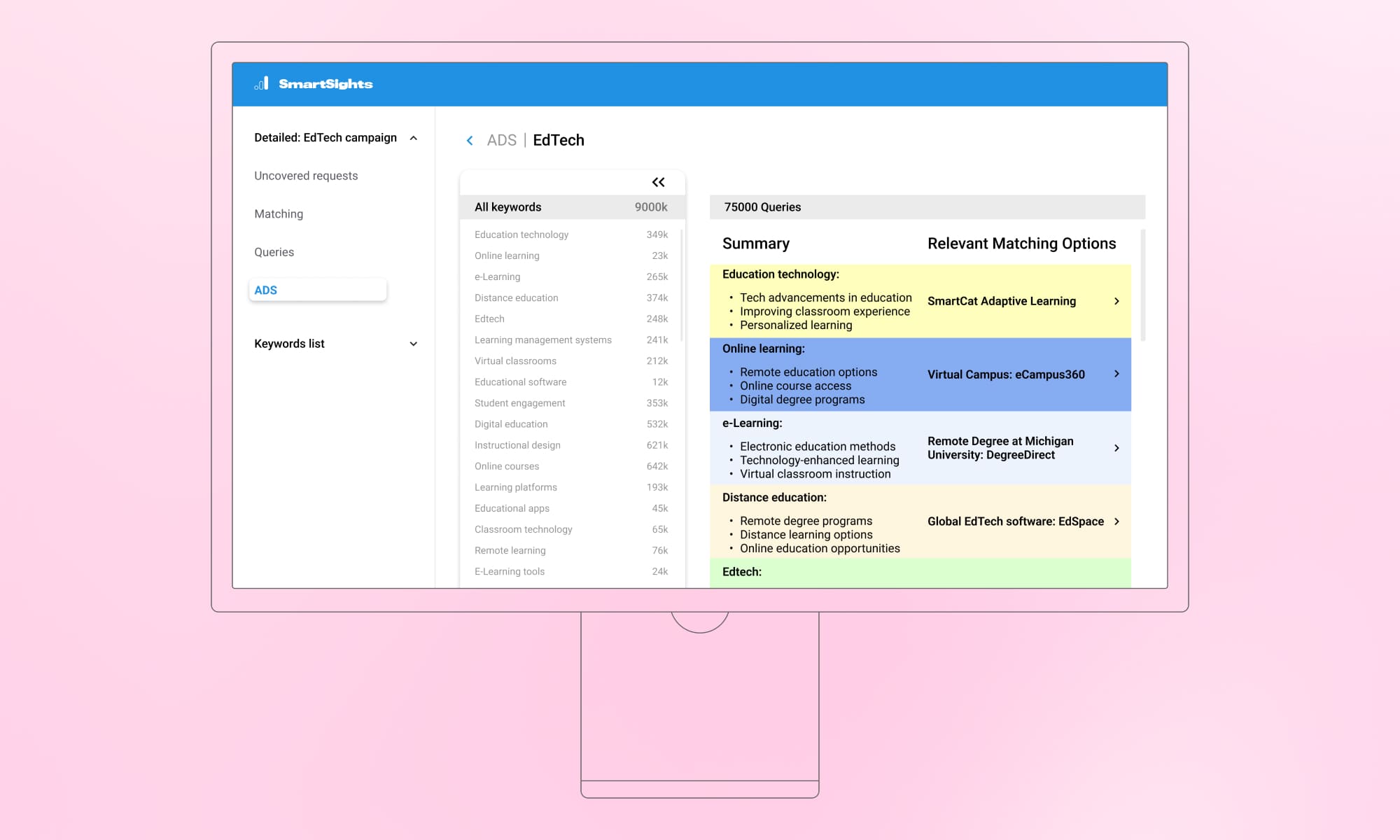
The ICT sector is at the core of modern connectivity, and AI is playing a pivotal role in enhancing how we communicate, analyze data, and optimize networks. From intelligent chatbots to data-driven telecom solutions, AI is not just making processes faster — it’s making them smarter. Whether it’s managing customer interactions or analyzing network performance, AI is becoming the backbone of digital communication.
Staying connected is crucial, whether for personal communication or business collaboration. AI-powered platforms like WebRTC applications enable real-time voice and video communication with advanced features like noise suppression, speech recognition, and automated transcription. This makes remote collaboration smoother and more efficient.
The telecom industry generates vast amounts of data, and making sense of it manually is practically impossible. AI-driven analytics platforms process network performance metrics, customer usage patterns, and maintenance data to deliver actionable insights. This helps telecom operators optimize service quality and predict network disruptions.
Customer support in ICT can be resource-intensive. AI chatbots automate routine inquiries, providing instant responses while gathering data on user issues. More advanced AI-driven virtual assistants can even troubleshoot common technical problems, guiding users through solutions step by step. This streamlines customer service processes, reduces response times, and enhances customer satisfaction through efficient, always-on support.
WebRTC mobile app. Imagine an app that seamlessly connects users through voice and video calls without lag or dropped connections. Innowise developed a WebRTC mobile app that leverages AI to optimize audio and video quality based on real-time network conditions. The result? Crystal-clear communication even in areas with spotty internet coverage. It’s like having a video call assistant that fine-tunes settings on the fly.

Data analytics platform. Think of a telecom operator that needs to manage network performance across multiple regions. Innowise created a data analytics platform that processes vast amounts of telecom data to predict service disruptions, optimize bandwidth usage, and enhance customer satisfaction. By analyzing real-time data, the system proactively addresses issues before they escalate.
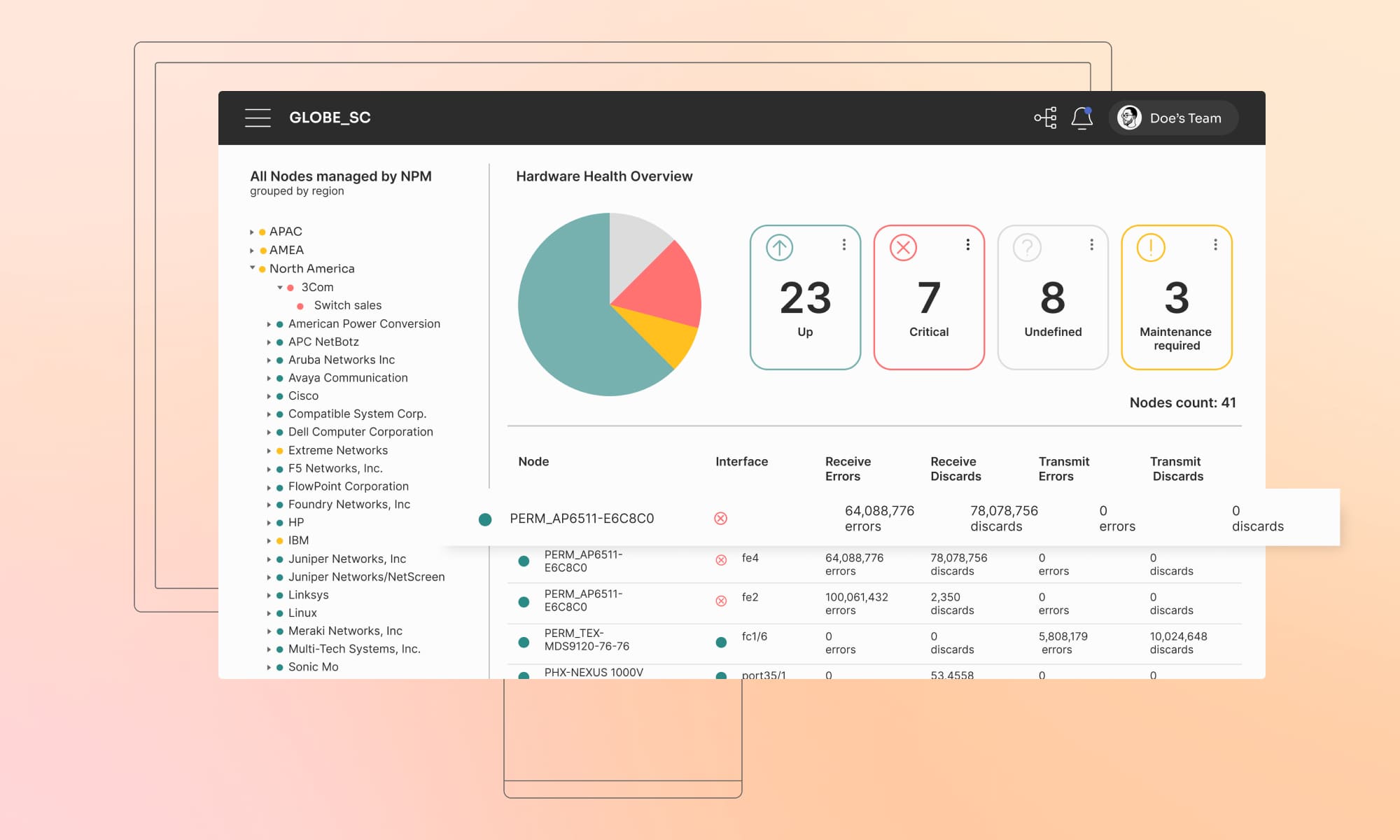
AI for web apps and sites. Innowise developed an AI-driven web platform that customizes content presentation based on visitor interactions, improving user engagement and boosting conversion rates. It’s like having a site that intuitively understands what visitors are looking for.

Chatbot for data analytics. Innowise’s AI chatbot for data analytics provides users with easy access to complex metrics through natural language queries. It’s not just a chatbot — it’s a data companion that makes analytics more intuitive.
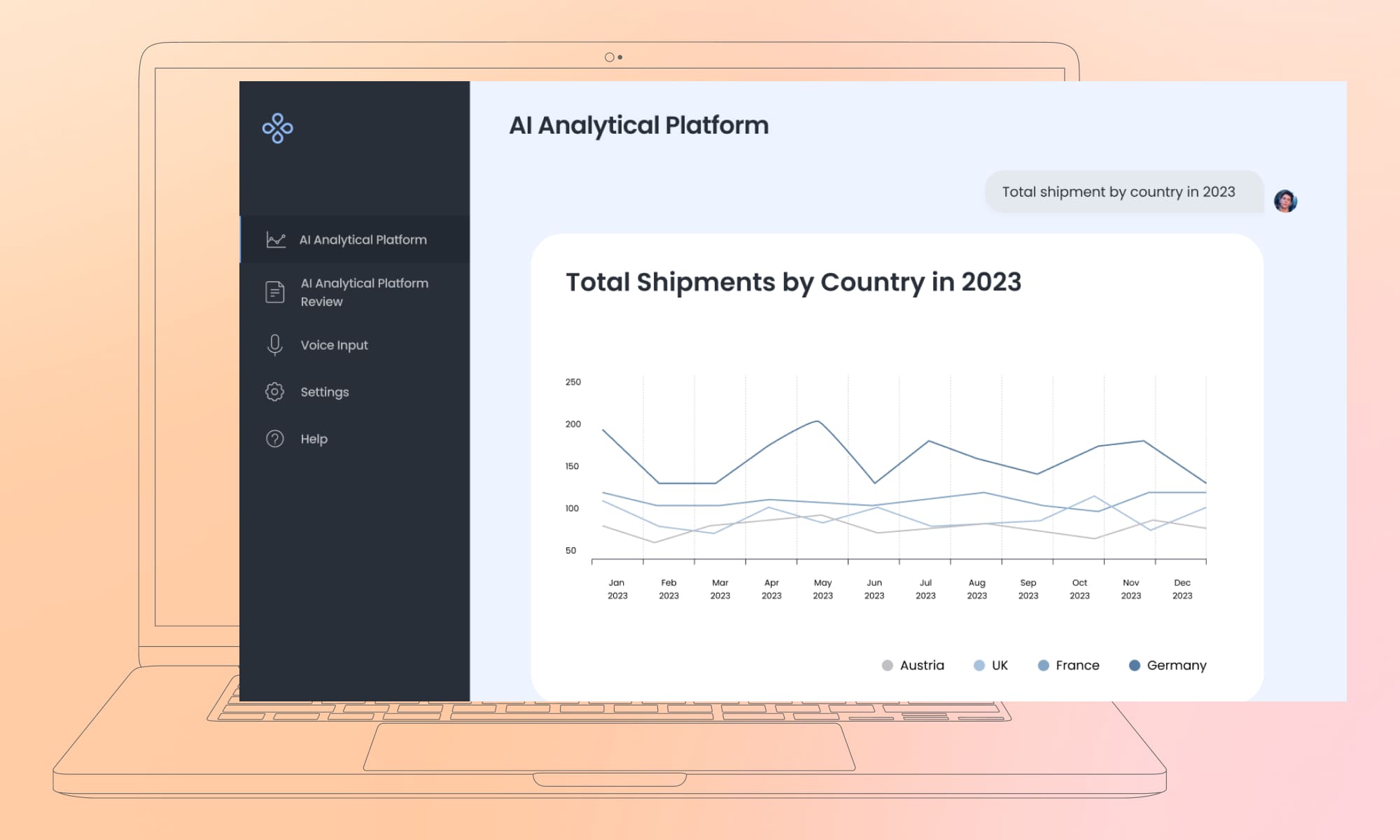
The world of investment and trading is fast-paced, data-driven, and highly competitive. AI is playing a key role in helping traders make more informed decisions, execute faster trades, and manage risks more effectively. It’s not just about crunching numbers — it’s about turning data into actionable insights and predicting market trends before they unfold.
Algorithmic trading isn’t new — but with AI, it’s like it leveled up. These smart systems chew through market data in real time and execute trades based on crazy-complex models that consider everything from price history to live market shifts. The best part? It makes trading faster, more efficient, more profitable — and way less prone to human “gut feeling” mistakes.
Predicting market trends requires more than just looking at historical data. AI-powered sentiment analysis tools scan news articles, social media feeds, and financial reports to gauge market sentiment. This way, traders can anticipate market movements influenced by public opinion or major news events.
Managing risk is crucial in trading, and AI helps by analyzing various risk factors, like volatility, economic indicators, and portfolio diversity. By simulating potential scenarios, AI tools help investors optimize their portfolios to maximize returns while minimizing exposure to risk.
Trading software. Innowise developed a trading software solution that leverages AI to analyze vast amounts of market data, predict price movements, and suggest optimal trading strategies. The system continuously learns from historical data, refining its algorithms to adapt to changing market conditions. It’s like having a personal trading assistant that never sleeps.

The travel and hospitality industry thrives on delivering personalized experiences and efficient services. AI is making this possible by transforming how businesses interact with customers, manage bookings, and optimize their operations. Whether it’s through AI-powered chatbots, dynamic pricing, or automated customer support, the goal is to enhance the guest experience while maximizing operational efficiency.
Travelers today expect tailored suggestions based on their preferences and past trips. AI-driven recommendation engines analyze user profiles, booking history, and even real-time data like weather or local events to suggest destinations, accommodations, and activities. It’s about making travel planning intuitive and personalized, which increases conversion rates and customer loyalty.
Setting the right price can be tricky in the hospitality industry. AI-driven dynamic pricing algorithms analyze market demand, competitor rates, and booking patterns to automatically adjust prices. This ensures that hotels and travel agencies stay competitive without underselling or overpricing.
Travel can be unpredictable — delays, cancellations, or changes in plans happen all the time. AI-powered chatbots are available around the clock to handle customer queries, process bookings, and even manage cancellations. This not only improves the guest experience but also frees up human staff to focus on more complex tasks.
AI medical advice app for travelers. Imagine a traveler falling ill abroad and not knowing where to seek medical help. Innowise developed an AI-powered medical advice app designed to assist users in unfamiliar locations. The app uses AI to analyze symptoms, provide initial advice, and recommend local healthcare facilities. It’s not just about convenience — it’s about safety and peace of mind when you’re far from home.

So, where is AI used? By now, it’s clear that industries using AI are across the board. But implementing AI isn’t just about picking the right tools — it’s about partnering with experts who understand your industry’s unique challenges. That’s where Innowise comes in.
At Innowise, we know how to develop AI solutions tailored to your business needs. Whether you’re looking to enhance customer experience, optimize processes, or drive data-driven decision-making, we’ve got you covered. Our team of AI specialists brings a deep understanding of machine learning, data analytics, and automation to every project.
AI’s potential varies greatly depending on the industry, and that’s why we take a tailored approach. Here’s a quick overview of the industries we serve:
Not sure where to start with AI? Our consulting services can help. Whether you’re exploring automation, data analytics, or AI-driven customer engagement, we’ll guide you through the entire process — from strategy to implementation.

Head of Big Data and AI
Philip brings sharp focus to all things data and AI. He’s the one who asks the right questions early, sets a strong technical vision, and makes sure we’re not just building smart systems — we’re building the right ones, for real business value.









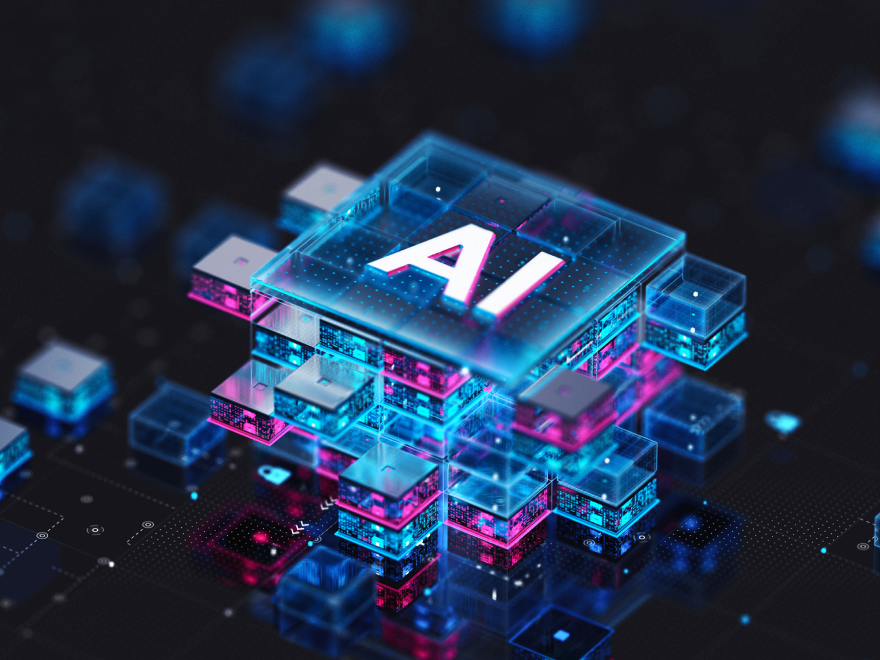
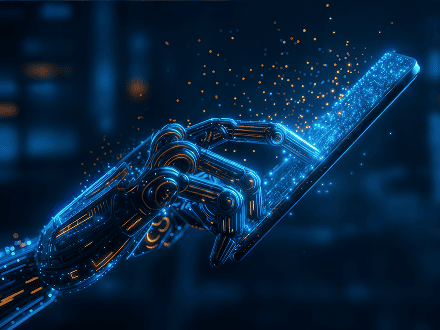

Your message has been sent.
We’ll process your request and contact you back as soon as possible.

By signing up you agree to our Privacy Policy, including the use of cookies and transfer of your personal information.